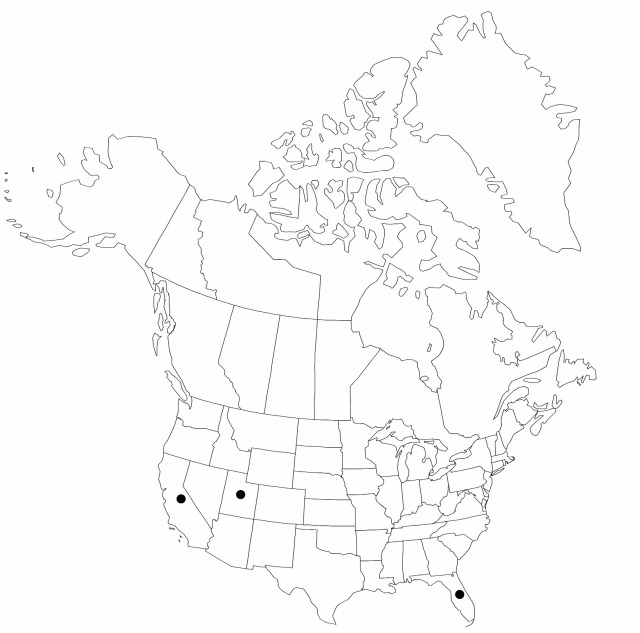Difference between revisions of "Cyperus esculentus var. heermannii"
Bull. Torrey Bot. Club 13: 211. 1886.
Basionym: Cyperus heermannii Buckley Proc. Acad. Nat. Sci. Philadelphia 1862: 10. 1862
FNA>Volume Importer |
imported>Volume Importer |
||
| (2 intermediate revisions by 2 users not shown) | |||
| Line 52: | Line 52: | ||
|publication year=1886 | |publication year=1886 | ||
|special status= | |special status= | ||
| − | |source xml=https:// | + | |source xml=https://bitbucket.org/aafc-mbb/fna-data-curation/src/2e0870ddd59836b60bcf96646a41e87ea5a5943a/coarse_grained_fna_xml/V23/V23_276.xml |
|genus=Cyperus | |genus=Cyperus | ||
|subgenus=Cyperus subg. Cyperus | |subgenus=Cyperus subg. Cyperus | ||
Latest revision as of 20:39, 5 November 2020
Spikelets ascending-erect, forming less than 40° angle with rachis, closely spaced (2 or more per mm of rachis), 15–25(–55) mm; floral scales deltate-ovate, widest at 1/4–1/3 length, 2.4–2.6 × 1.7–1.8 mm. Flowers: anthers 1.2 mm; styles 0.9 mm; stigmas 1.6 mm.
Phenology: Fruiting summer.
Habitat: Disturbed soils, croplands
Elevation: 0–1200 m
Distribution

Calif., Fla., Utah, Mexico.
Discussion
Cyperus esculentus var. heermannii is the least common and most geographically restricted of the varieties. Its spikes are more dense (2 or more spikelets per mm of rachis) than the other varieties (ca. 1 spikelet per mm of rachis).
Selected References
None.
Lower Taxa
None.